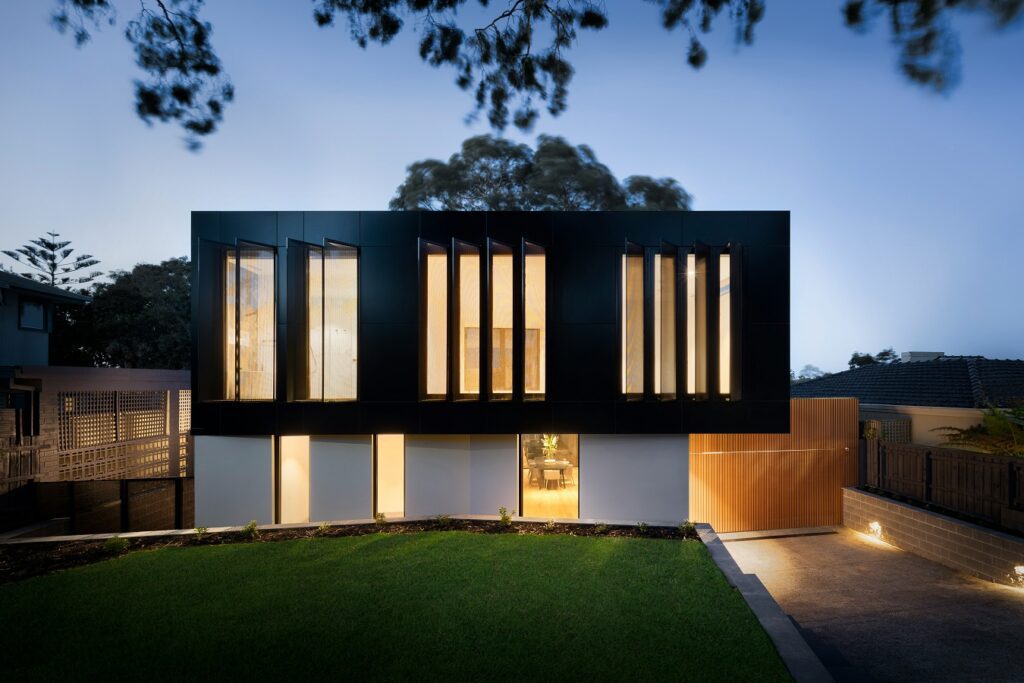Or maybe “location” is no longer even two of the three most important criteria, as the saying goes.
Maybe now it’s “size, age, location,” or some combination of those.
Throughout 2018, I’ve seen a huge shift in buyer appetite away from location, and toward the overall offering in a home.
Let me explain, and give you a few case studies…
Do you value the “L” and the “V” on your handbag?
Louis Vuitton. Come on ladies, some of you own one of theses pieces of magic!
$3,000 for this bag that transforms all your belongings into better belongings! Your wallet is more special, your sunglass case is fresher, your package of Kleenex is more special.
It’s why you drop $3,000 on a bag, instead of carrying a $400 Michael Kors alternative.
We could probably play this game all day long, and to be fair, I’m sure there are products or services that I value, that other people don’t.
What I’m obviously getting at here is the value of a brand name, or if we’re going to be completely honest, we wouldn’t use “value;” we’d use “price.”
A Louis Vuitton handbag carries personal effects, as does a Michael Kors bag, but one costs 7-8 times as much as the other.
So when it comes to the “brand-name” of a Toronto neighbourhood, how do you feel about paying the price?
And to circle back to the concept of value, if you do pay a higher price for what you could elsewhere at a lower cost, do you assign a value to that location?
The value of a brand-name is in the eye of the beholder.
Some people don’t care if their neighbourhood has a “name,” and others do.
Terms like “Leslieville” and “Davisville Village” weren’t in the common vernacular 15-20 years ago, but real estate agents, and trendy residents wanted to have that panache that accompanies a homogenous, identifiable neighbourhood, and as an extension, the value.
You’ve probably heard this story at least 2-3 times before if you’re a long-time blog reader, but I’m going to tell it again.
Circa 2004, I was at an extended family function in Burlington, whereby just about everybody attending was from Burlington, Hamilton, or Niagara.
There was one woman, however, who was from Toronto. She, of course, didn’t know that I was from Toronto as well.
When our mutual friend introduced us, I asked her where she lived.
“Leaside,” she said, with a smile and obvious pride.
Leaside.
Yes, Leaside.
You all know where Leaside is, right?
Good. So when I pressed her and said, “What street are you on?” I was quite amused when she said, “Chilton.”
“Chilton?” I asked, with a backwards-jerk of the head.
“Chilton isn’t in Leaside,” I said, with a handful of her family members listening in.
“It’s in East York,” I told her.
She smiled, confidently, and said, “Ohhhh……south Leaside, David.”
The member of my family, who was the link between myself and this woman, was absolutely beaming with delight. This was her aunt, who she didn’t much care for, and whom she always found to be pretentious and competitive. Suffice it to say, she was enjoying my unintentional takedown of her full-of-sh!t auntie.
“Actually, south Leaside is bordered by Bayview, Eglinton, Moore, and Laird,” I told her, trying to be helpful, believe it or not. “Chilton is in the East York triangle. Nice spot, but about 1.5 KM away from the Leaside border.”
This was meant to be conversational in nature, on my part. I had no idea that this woman had spent the last decade telling her out-of-town family that she lived in Leaside, when she did not.
Which brings me back to my point, today.
Do you care if your neighbourhood has a “name?” Or better yet, a “brand name” associated with the neighbourhood?
What would you say to somebody who lived on Bloomfield Avenue? It’s a gorgeous street, tree-lined, one-way, very quiet, and two blocks from Greenwood Park. But what is this area called? Does it have a brand name?
Well, I guess real estate agents and residents have started to simply call it “Greenwood Park.” So maybe we can’t escape the name-game.
I’ve noticed a trend through the first six months of 2018 whereby many of my buyers are shying away from the “name” areas and looking for more value elsewhere.
Once upon a time, buyers valued the name-areas, with the “better” schools, or access to retail, transit, parks, and amenities.
And I put “better” in quotations because the Fraser Institute ranking is not the be-all and end-all. You also want to look into the class sizes, curriculum, outdoor space (tremendously important to me, since I want my kids to play outside and not play X-Box all day…), and extra-curricular activities.
So far in 2018, I’ve had at least 4-5 buyers end up in areas they did not think they’d be in, simply because the offering was superior.
I was recently working with a couple who started out in the west end, but couldn’t really afford what they wanted.
So I took them to midtown, and introduced them to Davisville Village and Leaside.
I showed them a semi-detached house in North Leaside; 3-bedrooms, 2-bathrooms, finished basement, private driveway with a garage, fenced backyard, and on a very quiet street, with lots of kids, priced around $1.3 Million.
This house falls into the prestigious Northlea Public School district, which not only has the coveted French Immersion program, but also has an exceptional school ranking, and excellent facilities.
The house is about a 5-minute walk to the future Laird TTC subway station, and is 8-10 minutes from Serena Gundy Park.
As new parents, looking to grow their family, I thought this house was perfect. And so did they!
Until they got to thinking, and realized what they really wanted, and both what was important to them – and what was not.
In the end, they determined that as gorgeous as Leaside was, what they wanted would cost them about $2.5 Million.
What they wanted just didn’t jive with this location.
So they put location on the back-burner, and put the age, size, and style of the house at the forefront of the search – a trend that, as I said, is gaining momentum.
One week later, we were looking at a new-build at Eglinton and Victoria Park. How’s that for a change in location?
This house was brand-new, never lived in. 40-foot frontage, 4-bedrooms, 4-bathrooms, built-in garage, and massive finished basement.
But it wasn’t just the “on paper” specs that put it in another category, ie. beds, baths, etc. It was the extras! Heated floors, security cameras, 200-amp panel, smart-home features, Pella windows, and everything aged 2018.
And how was the home priced? Same as the one in Leaside.
My buyers loved the house. They didn’t care where it was. They couldn’t have possibly cared less about the location or brand-name of a “Leaside.” They simply wanted a larger home, with all the features they covet. She got the massive walk-in closet she’s always wanted, and he got the man-cave in the basement; two things they wouldn’t get in Leaside unless they spent DOUBLE on the home.
Earlier this year, I had a similar experience with a couple who started their search looking up at Yonge & Blythwood with the “buy the worst house on the street, to get into the best area” mentality, but who eventually went in the complete opposite direction.
I showed them Riverdale, Leaside, Allenby, Bedford Park, and the like.
We bid on one house around February or March – a very narrow detached home on a 25-foot lot (that’s small for this location!), built new in 1989. This was a 3-bed, 4-bath home, which left something to be desired for the home itself, but was in a fantastic neighbourhood, highly coveted, and a great school district.
The house was built well above grade, with an elevated front porch. So with three toddlers, the prospect of lugging a stroller up and down those stairs every day (no access to the garage from the house) wasn’t looked forward to. But the buyers were willing to overlook this daily grind to get the house……at a price.
Listed for $1,599,000, I think there was something like 12-15 offers, and the house sold for $1.95 Million. We were well below that number, not even entertaining the idea that a house this narrow would fetch a price like that.
I continued to show them houses; Browning, Roselawn, St. Clements, Erskine, and eventually we ventured into Leaside and saw the Brentcliffe’s, Donlea’s, and Glenvale’s of the world.
And then one day, they asked me about new builds in East York.
East York? Really?
This was a far cry from Leaside! Not even close to John Wanless Public School! Without the same panache as Allenby!
But you know what? They didn’t care.
They wanted to buy a house, not an area.
We settled on a brand-new, detached, 4-bed, 4-bath on a 34-foot lot.
Private driveway, built-in garage, main floor family room, 5th bedroom in the basement, and one of the largest basement rec-rooms I have ever seen in a house this size. 29 x 20 feet! That’s one room!
I was instantly jealous. The man-cave possibilities were endless, although my clients were thinking “kid’s play room.”
Try as I might to push them toward an 80-inch TV, pool table, 16-person sectional couch, and a couple of Lazy-Boys, they were unmoved. This was an incredible kids’ play area; one that was triple the size of what they might get in the other areas we were looking.
This house had also never been lived in, and at the risk of sounding naive, it was well-built, and the finishes were spectacular. The finishes weren’t just higher-than-average-end, but they were tasteful, and the buyers wouldn’t need to change anything.
The flow of the house was excellent. This wasn’t a 1950’s-built, thrice-renovated home that had been semi-gutted multiple times over 70 years, leading to awkward layouts. This was a strategically-built home with the layout and flow that a 2018-buyer covets.
All-in-all, it was exactly what the buyers wanted, nay, dreamed of. And that sounds cheezy, I know. Any time I hear the word “dream” associated with real estate, I sigh. But this house had everything they wanted, and then some, and would have cost double if it were in the areas we were previously considering.
The icing on the cake was that we paid $100,000 under the list price, after a series of drawn out negotiations.
This was a different world than the 12-15 offer melee we experienced only a couple of months earlier.
I had a similar situation with a couple who was looking in Roncesvalles earlier this year.
I’ll save you the drawn-out story like the first two examples, but once again, we went from a 3-bedroom, semi-detached on anywhere from an 18 to a 22 foot lot, suddenly to a detached 4-bedroom in the Parlawn area. Once again – same price.
Those who are big proponents of neighbourhood-value will say, “So what? So you went outside of great areas into inferior areas to get a larger house. This isn’t rocket science.”
No it’s not.
But it’s a trend, and the trend is gaining momentum, from what I can tell.
I would say the overwhelming majority of buyers still target location first and foremost. But this has fallen from a near entirety to that majority, which is noteworthy, no matter what conclusion you want to draw…
































Francesca
at 7:28 am
I can totally see this scenario becoming more predominant as single family homes become increasingly out of reach of most families budgets. What you are describing David is exactly what happened to us nine years ago. We strarted looking in various trendy name worthy family friendly areas of the city both in the west, east and north end of the city to upgrade from our stacked townhouse. Most of the houses in our budget were too small with terrible layouts and some didnt even have parking! Much to my chagrin my husband dragged me up to Markham where he grew up and we found various homes that fit our needs and budget. We settled on a then four year old house in an established area called Cornell village with good schools, community centres and a hospital all within walking distance. We have a front porch like many houses in the city do but all the space and amenities of a new build ( powder room, walk in closets, open concept kitchen, large bedroom, built in garage etc). Would I have thought that we would have ended up here after more than a year house hunting? No but in the end the house trumped the location for us like in the cases of your above clients. And in case any of you are wondering, no neither one of us is facing a deadly commute. I’m a stay at home mom and my husband works 20 min away on the 407. If a less desirable location isn’t going to make your daily commute intolerable and you find a house you love with other kids in a good school district, who cares about the cachet off saying you live in a neighbourhood that makes your friends jealous with envy?
Not Harold
at 10:04 am
That’s a key point: what’s the commute like?
Going from Leaside to Eg & Vic Park could have minimal effect or it could be a disaster, just as in the city to Markham could be.
My real estate preferences and valuations are predicated on one to two people working at King & Bay. It’s where I work and where the highest concentration of potential buyers are. So for me personal and resale assessment are the same.
So many people don’t think hard enough about resale, whether it’s design, layout, or location. That bargain can lose you appreciation when you sell.
As to schools: the highly regarded midtown schools don’t just have very good fraser rankings, they have everything. Lawrence Park and Rosedale/Moore Park kill it on every metric while other areas that are hard to differentiate or have less attractive houses need a high fraser score. Alternatively you have bellwoods area that has expensive houses and schools that are not good.
Professional Shanker
at 11:25 am
So the question becomes is a good neighborhood (reduced commute, schools, etc.) worth exponentially more debt and/or sacrificing on your housing wants.
David, is saying he is seeing a paradigm shift in his clients (albeit a small sample size) because good areas cost too much $$$$$. There is a price for convenience/quality which everyone reaches at some point.
Not Harold
at 7:18 pm
From my experience, the tradeoffs are huge.
It really is Moore Park vs Vic Park and Eg.
There’s effectively no discount for Riverdale/Danforth.
I feel that Vic Park is a huge tradeoff in commute and school quality as well as being a bad idea on future price appreciation.
If you aren’t working downtown the tradeoffs can make more sense.
When I was dealing with commutes out to the Beach / Fallingbrook, it really sucked. 30+ minute drive and a VERY expensive parking spot. Or a 45+ minute streetcar ride or a difficult commute by GO (really depends on how close you are to Main or Scarborough GO).
If you’re willing to eat the commute to a not that accessible part of Toronto, should really look at Mississauga, Oakville, Markham… Again depends on where exactly you’re going but the price value equation is very different and, I feel, better for the suburbs once you’re already committed to a not great commute.
iwill
at 9:45 am
I thought Leaside was East York.
Long time Leasider
at 11:03 am
Leaside was part of the Borough of East York before Mel Lastman’s amalgamation in 1998.
But as “The City of Toronto” exists now, there are only neighbourhoods know by name and no longer defined boroughs or other geographic municipal boundaries.
East York is bordered by O’Connor to the north, Mortimer or Sammon to the south, Woodbine to the east, and the DVP to the west.
Nonetheless, the person in the story had this backwards even from a pre-1998 standpoint. She said she lived in Leaside when she lived in East York. She could have said she lived in East York since she lived in Leaside.
Geoff
at 9:49 am
@ Francesca – as someone who grew up in Markham I always smile when I think of Cornell as an established area – when I was a boy in the 1980s we used to bike up to go fish in that area. Times change. 🙂
@ David – I must admit to being a bit like your aunt in that I say I live in Don Mills – even if technically I live in Parkwoods-Donalda (just off underhill, but on the ‘wrong’ side). Speaking of my area, a house just a few doors down from us was listed on Tuesday, and the open house this weekend was packed…. so we’ll see what happens – it’s my little canary in the coal mine so to speak as I gauge real estate activity.
Francesca
at 12:04 pm
@ Geoff..I know what you are talking about as my husband used to say the same thing. He grew up in the 80s around Raymerville and McCowan and said Cornell area was nothing but fields and farms but then. When we moved here the area was relatively established compared to some newer subdivisions (more mature trees and amenities nearby) but obviously not as established as much older areas. We actually found that it reminded us of Toronto areas like the Beaches with the front porches and rear garages in the laneways and not the typical cookie cutter suburban houses of most of York region. We love that we have a little Main Street that we can walk to with different services and that we don’t have to drive everywhere either. My husband managed the building of our new community centre a few years back and he was even able to walk to work then! You live close to my parents (they are at York Mills and Bayview close to Denlow PS) and I too would say your area is Don Mills as most people wouldn’t know the specific area you are referencing to most likely.
BJA
at 3:35 pm
My wife and I are actually kind of the opposite of the “full-of-sh** auntie.” We live north of Danforth between Broadview and the DVP, which is officially in Playter Estates. However the houses in our area aren’t nearly the size (or price) of the “actual” Playter homes east of Broadview, so we felt that saying we live in Playter Estates would be misleading (and perhaps a mite pretentious). We considered telling people (who asked) that we live in Riverdale (which is just south of us) since most people know where it is, but decided in the end to say simply “Broadview and Danforth.”
JL
at 11:43 am
I think the important distinction is if these buyers were looking at the “good” areas primarily for the name/reputation, or actually valued the underlying things that those neighborhoods provide (and which may have contributed to that reputation). If it’s just the name, then its easy to understand moving on and looking elsewhere. If you like a certain neighborhood because of transit, commute time, schools, shopping, etc, then you’re clearly trading off those factors to find a more desirable/larger place.
Condodweller
at 1:35 pm
This new trend makes a lot of sense to me. Necessity is the mother of invention. With current prices, I am sure most of the “desirable” areas are out of reach for most people. It only makes sense to look elsewhere for better value where one doesn’t have to give up their wants. The trouble is that even the less “desirable” places may be out of reach for many people. Witness booming condo market.
Ralph Cramdown
at 12:33 pm
Am I a big proponent of neighbourhood value? Hmm…
I don’t see how a trend, as defined here, can get legs. We are talking about an equilibrium between how much house today’s buyer couple desires, in how “good” a neighbourhood, and how much they are willing to pay for it. And the market clears everywhere, with every house in every neighbourhood getting the price that today’s most enthusiastic qualified buyers thought it was worth. Two or three of David’s clients may have left for greener pastures in a huff, but that’s because the house sold in double digit offers for a few hundred thou more than they were guessing…
Infill new builds give you — by definition — the most house and the least “neighbourhood” at any given price point, and bulldozer bait gives you the opposite, and they’ve all been selling all along.
I would think (and regular blog readers know that I’m always wrong in my predictions…) that infill near scrape jobs in great neighbourhoods would represent the best relative value in today’s market, as the redevelopers who you would normally be in competition with have pulled in their horns more than any other buyer segment.
Buying into a neighbourhood is picking out your family’s peer group. That is who your children will grow up with over the next two decades, and who they’ll network with for five decades after that. The market puts a price on that opportunity (er, “privilege”), and I guess that’s “neighbourhood value.”
Ralph Cramdown
at 12:53 pm
“infill near scrape jobs”
I was trying to say dumpy old houses where the buyer might be somebody who’d live in it (perhaps after some repairs) or might be somebody who’d redevelop it.
Julia
at 7:44 pm
I couldn’t agree more – especially with the last paragraph. Sure we could get more square footage for our money elsewhere but it would not be in the top school district nor close to all the amenities we are a walking distance from right now. Quality of everyday life must be worth something.
Tommy
at 7:17 pm
Sorta like moving to the burbs to live in a mansion versus staying in the city in a 25×140 house. I personally prefer staying in the city for the vibrancy, the mature trees, access to mass transit, schools, etc. The burbs are bland no matter how nice the build is.
A
at 3:56 pm
This is a debate I have with my colleague all the time. Our real estate purchases could not have been any different.
He bought a brand new built on the Bloor Subway line for app. $2M (W7) where I bought an updated 75 year-old home closer to the Yonge Subway line.
Land is the part that has the potential to appreciate or keep its value whereas the structure is the depreciating part no matter the market conditions. It is just a variation of how people are buying condos which (to each their own) are depreciating assets where market price flat-lines or goes down.
Going back to David’s observations, my observations are similar although they are not identical. Houses that show well and are up to date (no matter where they are generally) have attracted a lot of interest whereas an older house that needs work has not attracted a lot of interest. In terms of the lower price point houses, this is just a variation of what we are seeing in terms of interest flocking into the condo market. It all boils down to affordability in the end.
Not Harold
at 7:33 pm
From looking at listings, many places in great neighbourhoods that need work are not priced to reflect that.
There was a 25 ft wide house on binscarth looking for 5 ish. Needed work, narrow, but priced very close to the neighbours on 50ft lots that were perfectly done. Similar with a house on Douglas right beside Chorley Park. Needed lots of work, very small lot, very high price.
The asking price didn’t reflect what it would cost to bring up to area standard or the limitations of the property.
I get not wanting a project, but area and choosing your kids’ peers is the biggest thing you can do.
Kyle
at 11:05 pm
I personally don’t think it is a trend, at least not a new one. This is how new neighbourhoods get christened. As new people move into a neighbourhood, at first it’s usually due to affordability, but then others follow and as the hood becomes more and more popular and gentrifies. People in these hoods try to create their own identity by coming up with their own recognizable name.
It’s funny in the last story that your clients, passed over Roncesvalles for being too expensive. When i first moved to Roncy over a decade ago, it wasn’t a highly coveted neighbourhood and it was were people went to find value. In fact back then the Roncesvalles Village moniker was relatively new. Something the BIA and Realtors used to differentiate the hood from Parkdale.
Same thing with many other neighbourhoods like The Junction, Junction Triangle, Bloordale, Dufferin Grove, Little Portugal, Seaton Village, Trinity Bellwoods, Beaconsfield VIllage, The Danny. Back in the 90’s NO ONE referred to these areas by any of those names.
como fazer laços e tiaras
at 5:08 am
Estado de Reparação dos Direitos Humanos. http://Artesanatoemgeral.Tumblr.com/
Tommy
at 7:10 pm
It’s just another way of saying buyers were priced out. Instead of being priced completely out of the market, they were priced out of the areas they could have afforded to buy their dream home in 3 years ago.
Peggy
at 5:57 pm
We bought our house at Greenwood and Gerrard area in the year 2000, long before it was called Leslieville. We just called it “the ass end of the East End”.
Peter
at 8:34 am
Ultimitely, you get what you pay for. One should always purchase in the BEST area they can afford which include areas of convenience (walkability to subway, close to work, local shops etc) as they will always hold their value best.
Your clients have purchased in “good” areas which will get stronger and appreciate over time but not at the same rate at the areas they could not afford in the first place. The delta between the two areas will only get larger over time.
My advice is that if you can get in the area today do so as you will not be able to get in that same area tomorrow.
There is a reason why he who purchases “Park Place” and “Boardwalk” win at Monopoly